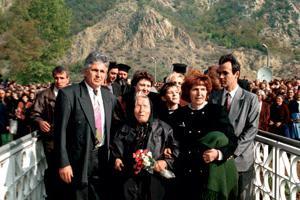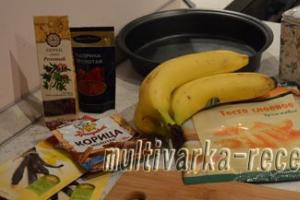Orthodox calendars are one of the most important attributes of the life of any believer. It is with this calendar that the church advises to compare events planned in life.
It is important to look at the calendar so as not to plan a feast with friends on the day of fasting and not to miss important dates on which it is better to devote yourself to spiritual cleansing and thoughts about God. In addition, major Christian holidays are a great joy for a religious person, and they simply must be celebrated in accordance with the spirit of the Faith and Christian canons.
Main Orthodox holidays in 2016
There are 12 of them, and 9 of them are called immutable. This means that their celebration date does not depend on Easter and remains the same from year to year.
- On January 7, Orthodox Christians celebrate the Great Nativity of Christ.
- On January 19, the entire Christian world celebrates the Baptism of our Savior.
- On February 15, in the middle of the month, the Presentation is celebrated, the meeting of Christ and the righteous elder from Jerusalem, Simeon.
- On March 4, the Annunciation is celebrated - the day of good news to the Virgin Mary about her future destiny.
- On August 19, the Transfiguration of the Lord is celebrated in all churches.
- August 28 - Assumption of the Virgin Mary, on this day they celebrate her reunion with Heaven.
- On September 21, the Virgin Mary was born; on this date her Nativity of the Virgin Mary is celebrated.
- September 27 - Exaltation of the Holy Cross, in honor of the founding of the Temple of the Resurrection on Calvary.
- December 4 - Introduction to the Temple, the feast of the first accession of the Mother of God at a still young age along the steps to the Jerusalem Temple.
- April 24 is Palm Sunday, the feast of the Lord’s Ascension to Jerusalem.
- June 9 - Ascension of the Lord, celebrated 40 days after Easter.
- June 19 - Trinity, the descent of the Holy Spirit on the apostles.
In addition to these dates, there are three more, transitional ones, on which church holidays are also celebrated:
Easter in 2016
2016 will be marked by a rather late celebration of Easter - May 1st. On this day, services will be held in all churches in memory of the bright Resurrection of Christ. This day serves as a reminder of the Kingdom of Heaven and the immortality of souls.

Then, from May 2 to May 8, Easter week will stretch. With Easter, the new Christian year begins and the countdown of all moving holidays and all liturgies associated with them begins.
Posts in 2016
The Orthodox calendar has 4 main multi-day fasts. Since the previous November 28, 2015, the main one, the Nativity Fast, has been stretching. It will end on January 6th. Then, on March 14 and will last until April 30, Lent. Petrov fast counts from June 27 to July 11. And the last, Assumption Fast - from August 14 to 27.
Also, all Wednesdays and Fridays are considered fast, except those that fall on Christmastide and continuous weeks. In 2016, Christmastide will last from January 7 to 17, and Weekends will last from February 15 to 21 (the week of the Publican and the Pharisee), from March 7 to 13 (Cheese Week, Maslenitsa), from May 2 to 8 (Easter Week) and from 20 to May 26 (Trinity Week).
Fasts accompany the day of Epiphany Eve on January 18, the day of the Beheading of John the Baptist on September 11, and the Exaltation on September 27. And since fasts differ, being strict and non-strict, it is better to prepare for each of them separately, so as not only not to eat extra food - this is not the main thing - but by this time to read spiritual literature and become purer in soul and more humble in disposition.
Remember about church holidays and the importance of prayer. Treat faith with respect, and in difficult times it will help you out without leaving you in trouble. And don't forget to press the buttons and
09.12.2015 00:30
On December 4, the Orthodox world celebrates the Entry of the Mother of God into the temple. The great day foreshadowed that the Most Holy...
The most important Orthodox holidays are distinguished by especially solemn divine services. The biggest and brightest event in the Christian church calendar is Easter. It has a special status and the most solemn service. The date of celebration is determined according to the solar-lunar calendar and is unique for each year (falls from April 4 to May 8).
The remaining great holidays are divided into twelfth and non-twelfth holidays.
Twelve's- These are the 12 most important holidays of the Orthodox calendar, dedicated to the events of the earthly life of Jesus Christ and the Mother of God. They are divided into two categories:
- Intransient
They have a fixed date and fall on the same date every year. These include 9 twelve holidays. - Transitional
They have a unique date for each year, which depends on the date of Easter and moves with it. These include 3 twelve holidays.
Non-Twelfths- these are 5 great holidays of the Orthodox Church, dedicated to the birth and death of John the Baptist - the baptizer of Jesus Christ, the apostles Peter and Paul, the appearance of the Mother of God, the circumcision of the Lord and the memory of St. Basil.
Orthodox fasts and continuous weeks
Fast– a period of food restriction during which you should refrain from eating food of animal origin.
There are 4 multi-day fasts: Great, Petrov (Apostolic), Assumption, Christmas and 3 one-day fasts: Epiphany Eve, Beheading of John the Baptist and Exaltation of the Cross of the Lord. There is also a fast on Wednesdays and Fridays.
Solid weeks- these are the weeks during which fasting on Wednesdays and Fridays is canceled. There are 5 such weeks in a year: Christmastide, Publican and Pharisee, Cheese (meat is prohibited), Easter, Trinity.
Days of special remembrance of the dead
On days of general remembrance of all deceased Christians, it is customary to visit the graves of deceased relatives and pray for them. In the circle of the liturgical year, such dates are: Ecumenical Parental Saturday, 2-4 Saturdays of Great Lent, Radonitsa, Commemoration of the Deceased Soldiers, Trinity and Dimitrievskaya Parental Saturdays.
Orthodox calendar contains two annual circles of events: , all dates of which are firmly established in , and , all of whose events are established relative to the day of celebration.
Easter Day is calculated according to (Alexandrian) and is celebrated simultaneously by all Orthodox Churches (except for the Finnish Church, which switched to the Gregorian calendar), as are all related events of the Easter circle.
The dates of the fixed circle are marked in different ways: according to Julian calendar (the so-called “old style”) and according to Gregorian calendar (modern civil calendar, or “new style”).
In the Russian Orthodox Church, as well as in the Jerusalem, Georgian, Serbian Churches and in the monasteries of Athos, the events of the motionless circle are celebrated, which in the 20th-21st centuries differs by 13 days. Thus, the beginning of the church year (), established on September 1, is celebrated according to the civil calendar on September 14.
In the other eleven Local Orthodox Churches, the dates of the fixed circle are celebrated. So, it is celebrated before the civil new year, on December 25.
The presented Orthodox calendar allows you to determine the dates of fasts and holidays from 100 to 20000. When you hover the cursor over a calendar date, information about the features of this day appears. When you click on any day of the month, the link will take you to the corresponding date in the detailed daily calendar of the Russian Orthodox Church. Links to the daily calendar work plus/minus 10 years from the current date.
Calendar on your website
Enter the desired width and height of the inline frame (the default sizes are 950px and 700px, which will allow you to place the calendar without horizontal and vertical scroll bars):- a great time when you can forget about your worries and have fun. And in 2016, Orthodox Christians, in addition to national celebrations, are also preparing for religious dates.
What memorable dates are celebrated on the church calendar and what do they mean?
In the Orthodox calendar with holidays for 2016, Christmas and Easter come first, followed by Twelfth holidays– 12 significant numbers, arranged in order of seniority after the Nativity and Resurrection of Christ.
Orthodox fasting calendar with holidays



Permanent holidays:
14.01 - Circumcision of the Lord (great)
15.02 — Presentation of the Lord (twelfth)
21.05 - Apostle and Evangelist John the Theologian
22.05 - St. Nicholas, Archbishop of Myra in Lycia, wonderworker
07.07 — Nativity of John the Baptist (great)
12.12 - Holy First. apostles Peter and Paul (great)
19.08 — Transfiguration of the Lord (twelfth)
28.08 — Dormition of the Blessed Virgin Mary (twelfth)
11.09 — Beheading of John the Baptist (great)
21.09 - Nativity of the Blessed Virgin Mary (twelfth)
27.09 — Exaltation of the Holy Cross (twelfth)
09.10 — Apostle and Evangelist John the Theologian
14.10 — Intercession of the Most Holy Theotokos (great)
04.12 — Entry into the Temple of the Most Holy Theotokos (twelfth)
19.12 - St. Nicholas, Archbishop of Myra in Lycia, wonderworker
Moving holidays:
02/07 — Council of New Martyrs and Confessors of Russia
14.02 — Week of Zacchaeus the Publican
21.02 — Week of the Publican and the Pharisee
28.02 — Sunday of the Prodigal Son
06.03 — Week of the Last Judgment
07.03 — Cheese Week
13.03 - Memories of Adam's exile. Forgiveness Sunday
20.03 — Triumph of Orthodoxy
27.03 — 2nd Sunday of Lent, St. Gregory Palamas, Archbishop. Solunsky
03.04 — 3rd Sunday of Lent, Worship of the Cross
10.04 - 4th Sunday of Great Lent, St. John Climacus
17.04 — 5th Sunday of Great Lent, St. Mary of Egypt
23.04 — Lazarus Saturday (Saturday of the 6th week of Lent)
24.04 - Entry of the Lord into Jerusalem (twelfth)
25.04 — Maundy Monday
26.04 — Maundy Tuesday
27.04 — Great Wednesday
28.04 — Maundy Thursday. Last Supper
29.04 — Good Friday. Crucifixion of Christ
30.04 - Holy Saturday. The Descent of Christ into Hell
08.05 - 2nd week of Easter (Antipascha). Recollection of the assurance of the ap. Thomas
15.05 — 3rd Sunday after Easter, Holy Myrrh-Bearing Women
22.05 - 4th Sunday after Easter, about the paralytic
29.05 — 5th Sunday after Easter, about the Samaritan woman
05.06 — 6th Sunday after Easter, about the blind man
09.06 - Ascension of the Lord (40th day after Easter, twelfth)
12.06 - 7th Sunday of Easter, St. Fathers of the First Ecumenical Council
20.06 — Holy Spirit Day (first Monday after Pentecost)
26.06 — 1st Sunday after Pentecost, All Saints
03.07 — 2nd Sunday after Pentecost, all saints who shone in the Russian land
:
05.03 — Ecumenical Parental Saturday (Saturday before the week of the Last Judgment)
26.03 — Ecumenical Parental Saturday of the 2nd week of Lent
02.04 — Ecumenical Parental Saturday of the 3rd week of Lent
09.04 — Ecumenical Parental Saturday of the 4th week of Lent
18.06 — Trinity Parents' Saturday (Saturday before Trinity)
09.05 — Commemoration of deceased soldiers
Winter holidays
 In the first month of winter, the Entry of the Most Holy Theotokos into the Temple is celebrated (December 4), and the Orthodox New Year begins with Nativity of Christ(Jan 7th BC) This is one of the main holidays in the Christian world. Beauty and solemnity mark the beginning of the new year. In memory of the Gospel tree, Christmas trees are decorated with candles. Strict fasting, that is, absolute abstinence from food, is observed on Christmas Eve. Orthodox Christians fast until the “first star.” The star that will be the first to light up in the sky this night is reminiscent of the star that announced the birth of the Savior in Bethlehem.
In the first month of winter, the Entry of the Most Holy Theotokos into the Temple is celebrated (December 4), and the Orthodox New Year begins with Nativity of Christ(Jan 7th BC) This is one of the main holidays in the Christian world. Beauty and solemnity mark the beginning of the new year. In memory of the Gospel tree, Christmas trees are decorated with candles. Strict fasting, that is, absolute abstinence from food, is observed on Christmas Eve. Orthodox Christians fast until the “first star.” The star that will be the first to light up in the sky this night is reminiscent of the star that announced the birth of the Savior in Bethlehem.
On January 19, the Baptism of Christ in the waters of the Jordan is celebrated. Although John refused to baptize the Savior, because he was convinced that a mere mortal was unworthy of such an honor. However, Christ did not put himself above other people and humbly went through the ceremony along with the rest of the people. The last winter holiday according to the church calendar Presentation of the Lord(Feb 15)
Spring dates
In March and April, Christians observe Lent, and on April 7 they celebrate Annunciation of the Blessed Virgin Mary. In the same month, the Entry of the Lord into Jerusalem takes place (April 26). This Great holiday is also called Palm Resurrection. This is also the date when Lent ends.
Easter. Bright Sunday of Christ (May 1)
Easter is the day of the Resurrection from the dead, the very essence of Christianity. In the Jewish calendar, Passover symbolizes liberation from slavery in Egypt, and for Christians it symbolizes liberation from the slavery of death. Easter reminds us of the Kingdom of Heaven for all the righteous.
Orthodox holidays in summer
 In the warm half of 2016 it is celebrated Ascension of the Lord(the 9th of June). Next comes Trinity Day. Pentecost(June 19) Trinity celebrates the tenth day of Jesus' ascension into heaven, and the fiftieth day after the Resurrection of Christ. According to legend, the Holy Spirit appeared to the apostles and blessed them to spread the teachings of Christ throughout the world. The Trinity symbolizes the beginning of the establishment of the Kingdom of God on Earth.
In the warm half of 2016 it is celebrated Ascension of the Lord(the 9th of June). Next comes Trinity Day. Pentecost(June 19) Trinity celebrates the tenth day of Jesus' ascension into heaven, and the fiftieth day after the Resurrection of Christ. According to legend, the Holy Spirit appeared to the apostles and blessed them to spread the teachings of Christ throughout the world. The Trinity symbolizes the beginning of the establishment of the Kingdom of God on Earth.
At the height of summer there will be Nativity of John the Baptist(July 7) and Day of the First Supremes Apostles Peter and Paul (July 12). August 19th day Transfiguration of the Lord, and ends the summer celebrations Dormition of the Blessed Virgin Mary(Aug 28)
Autumn in the Orthodox calendar
 Autumn is the time of harvest and the final stage of the year. The first date and at the same time the post - Beheading of John the Baptist(Sept. 11) September 21 is coming Nativity of the Blessed Virgin Mary, and 27 - Exaltation of the Holy Cross. After the crucifixion of the Savior, for several decades, the emperors of Rome attempted to destroy even the memory of the Resurrection. Therefore, the cross on Golgotha was covered with earth, and a pagan temple was erected at the site of Christ’s crucifixion. But later, Emperor Constantine, who converted to Christianity, ordered the temple to be demolished and the cross on which Jesus was crucified to be found and preserved. In memory of these events, the Day of the Exaltation of the Honest and Life-Giving Cross of the Lord arose.
Autumn is the time of harvest and the final stage of the year. The first date and at the same time the post - Beheading of John the Baptist(Sept. 11) September 21 is coming Nativity of the Blessed Virgin Mary, and 27 - Exaltation of the Holy Cross. After the crucifixion of the Savior, for several decades, the emperors of Rome attempted to destroy even the memory of the Resurrection. Therefore, the cross on Golgotha was covered with earth, and a pagan temple was erected at the site of Christ’s crucifixion. But later, Emperor Constantine, who converted to Christianity, ordered the temple to be demolished and the cross on which Jesus was crucified to be found and preserved. In memory of these events, the Day of the Exaltation of the Honest and Life-Giving Cross of the Lord arose.
Last autumn date of Christians Protection of the Blessed Virgin Mary(Oct 14)
This day symbolizes the patronage of the Mother of God over all believers. Gives faith that the prayer and protection of the Mother of God extends over all people. Called to give hope for salvation to everyone who turns to God, regardless of the person’s location and the circumstances surrounding him.








